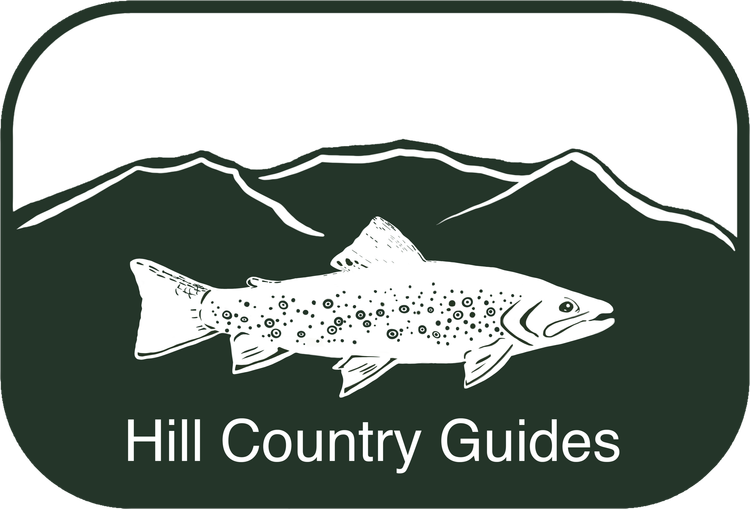Needless to say this report is long in coming. We've been down here in the Ozarks for the past four weeks and the fishing has been spectacular. We arrived on March fifth and did a full week of scouting before the guiding began. We landed some large browns on streamers the first week. After some trial and error scouting. Our partner in crime Greg Englis got this nice fish right by the lodge on one of his signature streamer patterns. He landed all of his big fish despite a broken ligament in his right thumb!
After a good week Getting Greg into fish despite a broken thumb it was time to get to work! Our clients have been landing some impressive fish from large cutthroats and bows to brute brown trout.
Andrew hooked up with a big cutthroat
Bob Parks with a 20" brown caught right above the second launch...out of the way of all of the bigger boats.
With low flows on most days, the name of the game has been stealth and advanced nymphing techniques. We feel very good about adding cortland competition nymph rods and trouthunter leader sand tippets to our lineup this season. With these forgiving and long four weight rods and strong tippets our clients have been able to make efficient long distance casts without sacrificing the ability to set the hook at distance. Once hooked we have lost very few fish on trouthunter 5X and 5.5X tippets. Being able to fish half sizes has been crucial as fish have been weary but are not easily landed on 6X. This has also allowed us to fish double rigs without losing much tippet strenght between flies.
Speaking of flies we have discovered some innovative ones down here this season. Our new friend Jeremy Hunt of Guides and Flies has shown us that heavy isn't always better with his signature 1/100th ounce jig hooks and we've been tying a variety of flies on these perfectly weighted hooks. The key here is that the fish are holding in shallow water and a fast falling fly does not look like natural food. These hooks allow the fly to flutter as it falls and it is common to see flashes of fish engulfing the fly as it falls through the water column. Jeremy's mega worm and another local pattern the Jimmy Jig have been particularly deadly in a variety of conditions.
I will often couple one of these larger nymphs with a suspended hares ear or ruby midge tied above the jig. If the smaller fly is getting eaten more than the big one it is often possible to fish the single smaller bug to limit tangles and allow for longer casts. If you are not familiar with the ruby midge it is similar to the traditional zebra midge but with a red crinkle flash body ribbed with one strand of black embroidery thread. It is the hemoglobin in these tailwater midges that glows red and these fish key in on this color on days midges are hatching. While the actual midges range from a size 18-22 I tie all of mine on size 16 curved nymph hooks and I just vary the number of tinsel wraps depending on the size of the midge I'm trying to imitate. I started this practice last year when I saw that the bigger browns would often throw size 18 and smaller hooks. These size 16 competition nymph hooks have been deadly effective in holding fish up to and over 20".
Jeff Smith landed this impressively fat 20" brown on a size 16 hares ear nymph. (here a hares ear nymph makes for a perfect caddis pupa imitation)
We have six more days of fishing here before we head back to the snowy land of North Conway NH. Nate will be out of the country for a week for his delayed honeymoon with Alicia. Tom and Steve will be available for LL salmon and brown trout trips while he is gone. By late April we will all be available for trips and will be searching for the large brown trout that should be waking up in the Saco river.
We'll try to give you one more report before we leave here next week!






